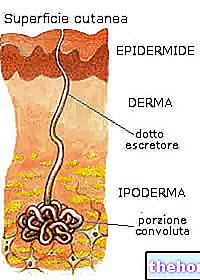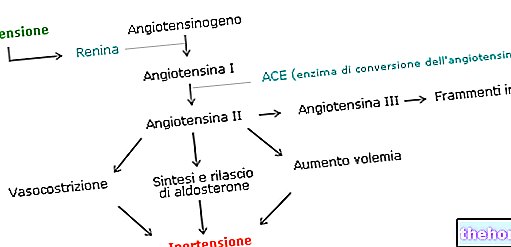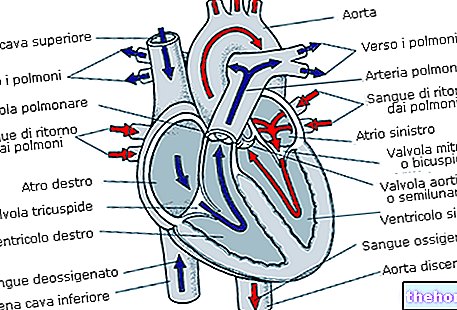Myelin is an insulating substance with a lamellar structure, consisting mainly of lipids and proteins. At the white-greyish sight, with straw-yellow hues, myelin externally covers the axons of neurons; this coating can be simple (monolayered), or composed of various concentric layers, which give rise to a sort of sheath or sleeve.
Proteins
Lipids
Gangliosides
Cholesterol
Cerebrosides
Cerebroside sulfate (sulfatide)
Phosphatidylcholine (lecithin)
Phosphatidylethanolamine (cephalin)
Phosphatidylserine
Sphingomyelin
Other lipids
21.3
78.7
0.5
40.9
15.6
4.1
10.9
13.6
5.1
4.7
5.1
Depending on the layers of myelin that surround the axon, we speak of unmyelinated nerve fibers (a single layer with a lack of a real sheath) and myelinated nerve fibers (multilayer sleeve). Where there is myelin, the nervous tissue appears whitish; we therefore speak of white matter. Where there is no myelin, the nerve tissue appears greyish; we therefore speak of gray matter.
In the central nervous system the axons are generally myelinated, while at the peripheral level the myelin sheath is missing around most of the sympathetic fibers.
As we shall see later, the formation of myelin sheaths is entrusted to the Oligodendrocytes (for the myelin of the central nervous system) and to Schwann cells (for the myelin of the peripheral nervous system). The myelin that surrounds the axons of neurons essentially consists of the plasma membrane of Schwann cells (in the peripheral nervous system) and oligodendrocytes (in the central nervous system).
The main function of myelin is to allow the correct conduction of nerve impulses, amplifying their transmission speed through the so-called "saltatory conduction".

A secondary but equally important function of myelin is that of mechanical protection and nutritional sustenance towards the axon it covers.
The insulating function is instead important because in the absence of myelin the neurons - especially at the CNS level where the neuronal networks are particularly dense - being excitable, they would respond to the many surrounding signals, just as an electric wire without an insulating cover would disperse the current without bringing it to destination.
Examining the composition of myelin, we note a preponderant contribution from lipids, especially cholesterol and to a lesser extent phospholipids such as lecithin and cephalin. The 80% of the proteins is instead made up of a basic protein and a proteolipid protein; there are also minor proteins, among which the so-called oligodendrocyte protein stands out.


As anticipated, myelin is made up of the plasma membrane (plasmalemma) of particular cells, which wraps itself several times around the axon. At the level of the central nervous system, myelin is produced by cells called oligodendrocytes, while at the peripheral level the same function is covered by Shwann cells. Both cell types belong to the so-called glial cells; myelin is formed when these glial cells envelop an axon with their plasma membranes, squeezing the cytoplasm outward so that each coiling corresponds to the addition of two layers of membrane; to be clear, the myelination process can be compared to wrapping a deflated balloon around a pencil, or a double layer of gauze around a finger.
Since in the S.N.C. there are space problems, each single oligodendrocyte provides myelin for only one segment, but more axons; therefore each axon is surrounded by myelinated segments formed by different oligodendrocytes. At the peripheral level, however, each individual Shwan cell supplies myelin to a single axon.
Oligodendrocytes and Schwann cells are induced to produce myelin from the diameter of the axon: in the CNS this occurs when the diameter is 0.3 μm, while in the SNP it starts from diameters greater than 2 μm.

Structurally unmyelinated fibers consist of small bundles of bare axons: each bundle is enveloped by a Schwann cell, which sends thin cytoplasmic offshoots to separate the individual axons. In unmyelinated fibers, therefore, numerous small-diameter axons can be contained in the introflexions of a single Schwann cell.
At the peripheral level, the presence of myelin produced by Shwann cells gives the nerve fibers the ability to regenerate, which until a few years ago was considered impossible at the level of the CNS. Unlike Schwann cells, in fact, oligodendrocytes do not promote the regeneration of the nerve fiber in the event of injury. Recent research, however, has shown that regeneration is difficult but also possible in the central nervous system and that, potentially, "neurogenesis", or the formation of new neurons, is even possible.




.jpg)























